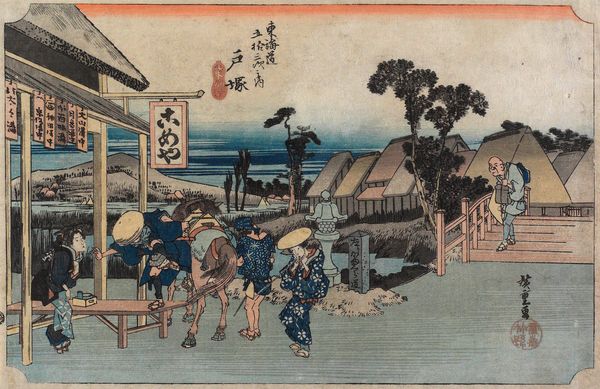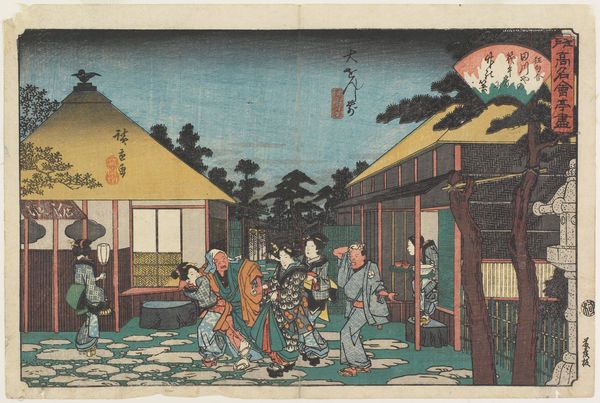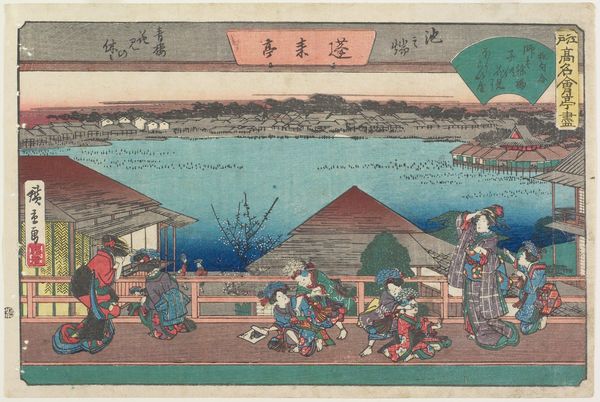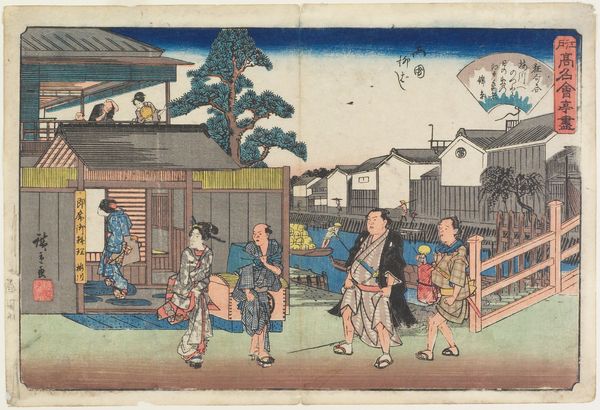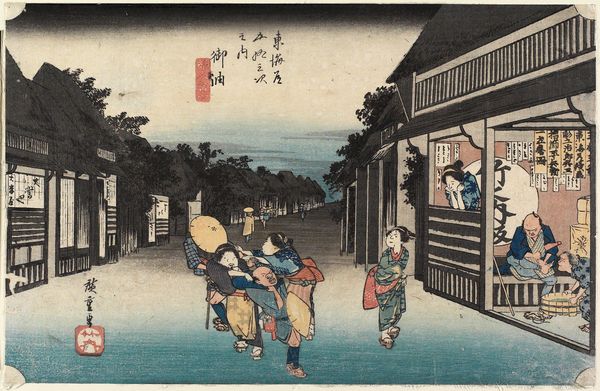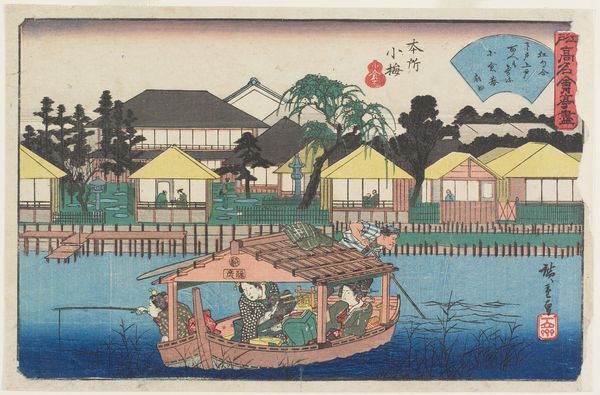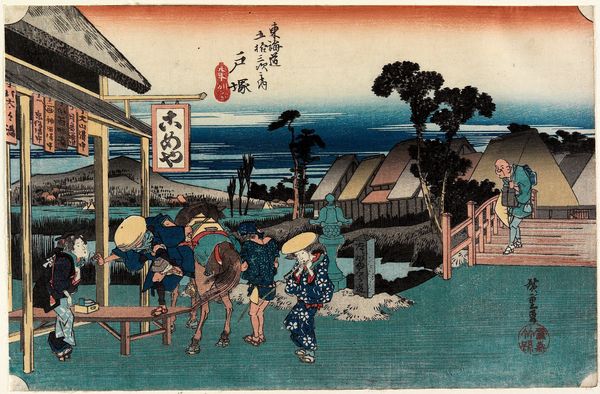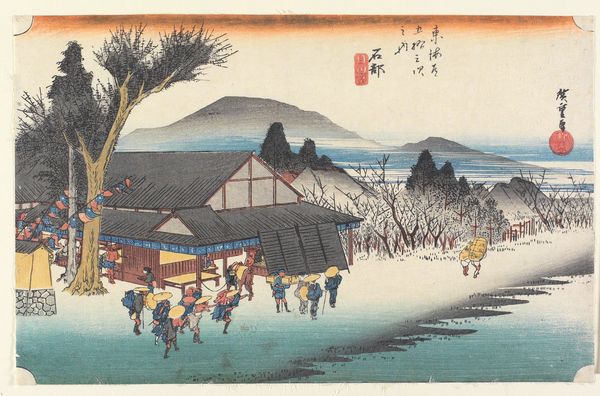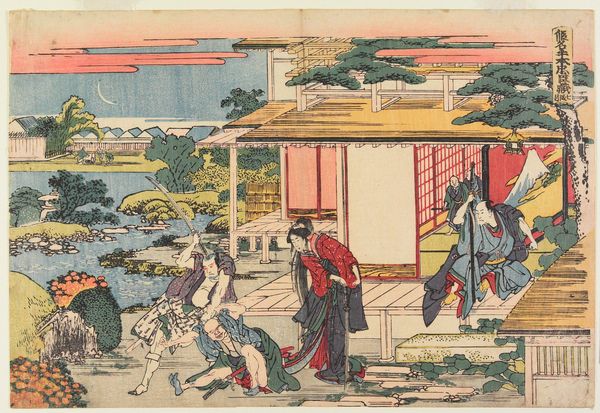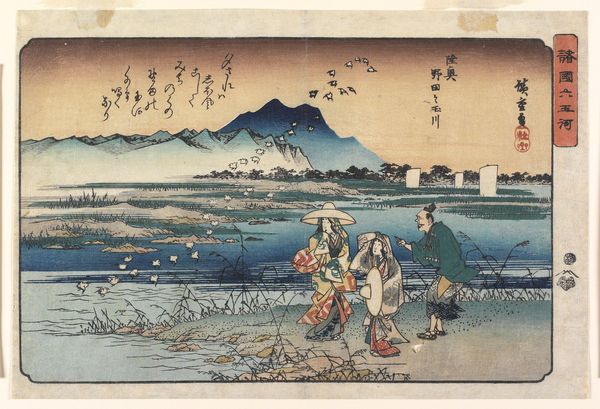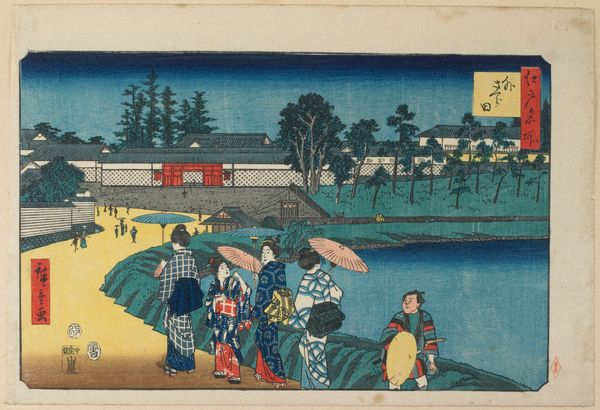
Crossing the Sumida River at Hashiba c. 1838 - 1840
0:00
0:00
print, ink, woodblock-print
# print
#
asian-art
#
landscape
#
ukiyo-e
#
ink
#
woodblock-print
#
cityscape
#
genre-painting
Dimensions: 8 7/8 × 13 3/4 in. (22.5 × 35 cm) (image, horizontal ōban)
Copyright: Public Domain
Editor: So, this is "Crossing the Sumida River at Hashiba," a woodblock print made by Utagawa Hiroshige around 1838-1840. There's a stillness to it despite all the figures depicted – what catches your eye? Curator: As a materialist, I'm drawn to the labor inherent in ukiyo-e. This wasn't just Hiroshige's vision; it involved skilled block cutters and printers. The varying textures achieved with simple tools – think of the flat expanse of water versus the delicate lines of the reeds – reveal a complex system of production. How does the social context of woodblock prints – their mass production and consumption – influence your understanding of the scene depicted? Editor: I hadn’t really considered it in that light before. Knowing these were mass-produced shifts my perception. I initially saw it as capturing a specific moment of leisure. But mass production implies widespread consumption, which probably shapes the subjects that are shown. I guess, rather than pure landscape, we see what the consumers of art wanted to see about themselves. How did that relate to the artistic boundaries back then? Curator: Exactly! It challenges our traditional ideas about "high art." Ukiyo-e were accessible, blurring the line between art and craft. Were these prints challenging social classes through depiction of these idyllic urban leisure scenes or affirming it? The materials, production methods, and the intended audience were inextricably linked, creating meaning. This challenges traditional, Western notions of authorship. Editor: I see, it's about moving beyond just aesthetic appreciation to understand art as a product of its material and social conditions. I'll definitely look at art through a new lens going forward! Curator: Wonderful! That’s the beauty of materialist perspectives—it connects art to the real world and how it was made.
Comments
No comments
Be the first to comment and join the conversation on the ultimate creative platform.
